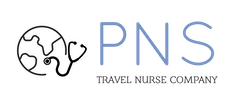Have you ever hired someone who did not live up to your expectations? Have you ever hired someone who greatly exceeded your expectations? How different were your hiring processes in each case? If you’re like most employers – the process used in each case was the same! (You just got lucky – or unlucky!)
What would it mean to your business (and your sanity!) if your company was chock full of great employees? Does this sound like an impossible dream? It’s not! So how can we increase the odds of hiring great people – every time?
We can start by avoiding the three most common hiring mistakes:
Mistake #1: The Company lacks a systematic, fundamentally sound approach to hiring that is used consistently.
Through the years companies have upgraded and modernised many of their business processes – such as inventory management, project management, technical design – but their hiring processes have remained static – run an ad, do some (unstructured) interviews, hire. The odds of getting the right person this way are about 14% – you could flip a coin and get better results!
Mistake #2: Hiring based on emotion rather than objective criteria.
Sometimes a hiring decision is based on the warm body approach – we need somebody right away – you breathe, you’re hired! Hiring decisions are often based simply on whether or not the interviewer likes the person – I like you, you’re hired! And sometimes the decision to hire is made because the candidate was outstanding in the interview – wow! – You’re hired!
The problem with these emotional approaches is that the chances of hiring a great employee are very low. You may desperately need to fill a position right away in order to get the work done, but if you hire the wrong person, the time you saved in hiring that person immediately will end up costing you a lot more in time and money. Develop a process
Mistake #3: The position is not clearly defined and the job description is not compelling.
In order to attract superior people, superior performance must first be defined and built into the job description. This is done through a performance profile, which emphasizes what a person must do to be successful in the job. This differs from the traditional job description which is based on experience, skills, and education. Average performers have the right skills and qualifications – superior performers can do the job at a superior level! Basing your job description on specific performance objectives improves the quality of the applicants for your position, and improves the objectivity of your screening and interviewing processes.

